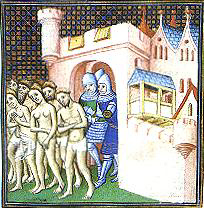Also called Château d’Albedun or Albezun. This ruined castle on the 823 metre summit overlooking the village of St. Just-et-le-Bézu is part of the giant pentacle that Brithish author and researcher Henry Lincoln described in his book the Holy Place. The other points of the pentacle are the Château de Blanchefort, Rennes-le-Château and the hilltops of la Soulane and Terre de Lauzet.

There are some intriguing things going on with the Sermon family. While all other nobles of Cathar faith where ruthlessly prosecuted and executed by the French, the Lords of Albedun kept most of their privileges and their lives. They also never had to borrow a penny from anyone but financed the Counts of Carcassonne and donated enormous amounts of money to the Knights Templar. It is unclear where all this money came from.
In 1307 the castle was inhabited by Othon d’Aure, vassal to the count, who was accused of counterfeiting money by agents of the French King Charles V. In 1344 when members of the Voisins family inhabited the Château, Brunissende who was Jacques de Voisins spouse and her brother in law and nephew of Pope Benedict XII Guillaume de Cathala were accused of the same thing. The accusation was not that they produced fake money without precious metal but rather proper but unauthorized golden coins. Here too it was unclear where all the gold came from.
In his book Rennes-le-Château et l’énigme de l’or maudit, French veteran author and researcher Jean Markale claims that the Templars inhabiting the Château de Bézu were the only ones not arrested on the notorious Friday 13th October 1307. In contrast to all other Templars in France they reported to the Counts of Barcelona.
According to a local legend, the well in a farmhouse in the nearby hamlet of Baruteaux contains a silver bell that rings every year in the night from 12th to 13th October. The ringing marks the start of a procession of Ghosts that walk from the cemetery to the Château de Bézu.
Château de Bézu on video by David Williams
Location of Château de Bézu
©2007-2012 renneslechateau.nl, all rights reserved




When there in 1997 excavations in progress – any revelations … also notice entrance to small tunnel, was this explored.
Geoffrey
I would like to thank you for the films taken about Bezu. I have never been there and at my age now I do not believE I ever shall. Thank you again.
Thank you Lionel for your kind comments. It makes it all worth the trouble.
Really appreciated!